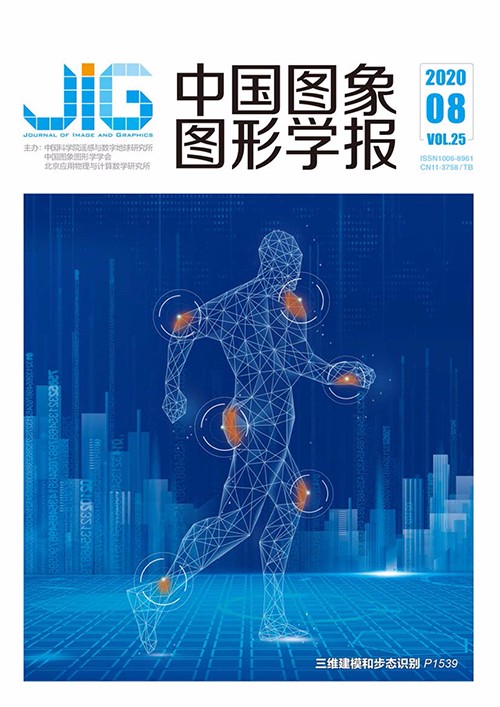
压缩感知下溃疡性结肠炎辅助诊断
摘 要
目的 长期感染溃疡性结肠炎(ulcerative colitis,UC)的患者罹患结肠癌的风险显著提升,因此早期进行结肠镜检测十分必要,但内窥镜图像数量巨大且伴有噪声干扰,需要找到精确的图像特征,为医师提供计算机辅助诊断。为解决UC图像与正常肠道图像的分类问题,提出了一种基于压缩感知和空间金字塔池化结合的图像特征提取方法。方法 使用块递归最小二乘(block recursive least squares,BRLS)进行初始字典训练。提出基于先验知识进行观测矩阵与稀疏字典的交替优化算法,并利用压缩感知框架获得图像的稀疏表示,该框架改善了原来基于稀疏编码的图像分类方法无法精确表示图像的问题,然后结合最大空间金字塔池化方法提取压缩感知空间金字塔池化(compressed sensing spatial pyramid pooling,CSSPP)图像特征,由于压缩感知的引入,获得的图像特征比稀疏编码更加丰富和精确。最后使用线性核支持向量机(support vector machine,SVM)进行图像分类。结果 对Kvasir数据集中的2 000幅真实肠道图像的分类结果表明,该特征的准确率比特征袋(bag of features,BoF)、稀疏编码空间金字塔匹配(sparse coding spatial pyramid matching,SCSPM)和局部约束线性编码(locality-constrained linear coding,LLC)分别提升了12.35%、3.99%和2.27%。结论 本文提出的溃疡性结肠炎辅助诊断模型,综合了压缩感知和空间金字塔池化的优点,获得了较对比方法更加精确的识别感染图像检测结果。
关键词
Adjunctive diagnosis of ulcerative colitis under compressed sensing
Yang Haiqing, Sun Daoyang(College of Information Engineering, Zhejiang University of Technology, Hangzhou 310023, China) Abstract
Objective Patients with chronic ulcerative colitis (UC) have a significantly increased risk of developing colon cancer, and an early detection via colonoscopy is necessary. Assisted diagnosis of UC is among the computer-assisted diagnostic topics in medical gastrointestinal endoscopy research that aims to find reliable features for identifying lesions in intestinal images. The typical endoscopic findings from UC images include loss of vascular patterns, granularity, bleeding mucous membranes, and ulcers. UC often repeats recurrence and remission cycles during its course and may be accompanied by parenteral complications. The risk of colon cancer increases when UC extensively affects the large intestine for long periods. However, endoscopes take a large amount of intestinal images, and noise interference, such as shadows, is often observed in these images. Therefore, accurate image features must be identified, and computer-aided diagnosis must be provided to physicians. The extant convolutional neural networks have demonstrated extraordinary capabilities in image classification but requires the support of large datasets and a very long training process. In sparsely coded image recognition, sparse coding pyramid matching (SCSPM) applies selective sparse coding to extract the significant characteristics of scale-invariant feature transform (SIFT) descriptors for local image blocks. Sparse coding also maximizes pooling on multiple spatial scales to combine translation and scale invariance instead of averaging the pools in the histogram. Locally constrained linear coding (LLC) refers to the rapid implementation of local coordinate coding, where local constraints are used to project each descriptor onto a local coordinate system. However, sparse coding cannot obtain an accurate image representation. The theory of compressed sensing is based on the sparseness of the signal and uses an underdetermined random observation matrix for sampling such signal. Each measurement value is not the signal itself but a linear combination function of multiple signals, that is, each measurement contains a small amount of information for all signals. The sparse reconstruction algorithm is used to achieve an accurate reconstruction of signals or an approximate reconstruction with certain errors. To solve the problems in UC and normal intestinal image classification, an image feature based on a combination of compressed sensing and spatial pyramid pooling is proposed in this paper. Method This paper proposes compressed perceptual spatial pyramid pooling (CSSPP) image features. First, block recursive least squares (BRLS) and K-singular value decomposition(K-SVD) dictionary learning are used to train some positive and negative datasets to obtain two initial dictionaries for comparing the two algorithms. Second, an alternating optimization algorithm based on the UC image prior perception matrix and sparse dictionary is developed. When finding the optimal perception matrix, the Gram matrix of the equivalent dictionary is considered, the sparse representation error is designed as prior knowledge, and the performance of the system is tested at different sampling rates. In dictionary optimization, the influence of the perception matrix on dictionary errors is considered, and the impact of different sparsity on classification accuracy is tested. Using the obtained sensing matrix and sparse dictionary to obtain sparse representations of all datasets in a compressed sensing framework can address the problem where the original image classification method based on sparse coding cannot accurately represent images. The maximum and average spatial pyramid pooling methods are then used to divide the image into 21 regions on multiple scales to extract CSSPP features. By introducing compressed sensing, the information of sparse representation is richer and more accurate than that of sparse coding. A linear kernel support vector machine (SVM) is used for image classification. Result The proposed algorithm was trained on 100 UC and 100 normal images taken from the Kvasir dataset. During the training phase, the mean square error of the dictionary obtained by BRLS training was slightly lower than that of K-SVD. The highest image restoration accuracy was obtained at a sampling rate of 31.25%. The performance of the two pooling features was examined under different sparsity. The maximum pooling in training accuracy was significantly higher than the average. The quantitative evaluation indicators include sensitivity, specificity, accuracy, receiver operating characferistic(ROC) curve, area under curve(AUC) value, and time efficiency. Tests were then performed on all 2 000 datasets, and the classification results show that the features can improve the auxiliary diagnosis of UC images. Compared with bag of features (BOF), SCSPM, and LLC, using the SVM classification results increases the AUC values by 0.092, 0.035, and 0.015, the sensitivity by 9.19%, 2.84%, and -0.24%, the specificity by 15.52%, 5.15%, and 4.77%, and the accuracy by 12.35%, 3.99%, and 2.27%, respectively. Compared with BOF and SCSPM, the running time was reduced by 2 164.5 and 1 455.6 seconds, respectively. Conclusion The auxiliary diagnosis model of UC proposed in this paper combines the advantages of compressed sensing and spatial pyramid pooling to obtain highly accurate detection results for identifying infected images. Compressed sensing was utilized instead of sparse coding to obtain the ideal classification results. Similar to neural networks, sufficient information is needed to train the system to obtain highly accurate results. Medical-image-assisted diagnosis requires highly comprehensive and rich image information as criterion. Using highly comprehensive image features to replace human subjective features presents a promising development trend. Therefore, the next goal is to provide doctors with auxiliary diagnosis of UC in real time. Accordingly, how to increase the complexity of the algorithm and the real-time nature of the system needs to be studied in the future.
Keywords
ulcerative colitis (UC) computer aided diagnosis compressed sensing(CS) alternate optimization spatial pyramid pooling(SPP)
|



 中国图象图形学报 │ 京ICP备05080539号-4 │ 本系统由
中国图象图形学报 │ 京ICP备05080539号-4 │ 本系统由